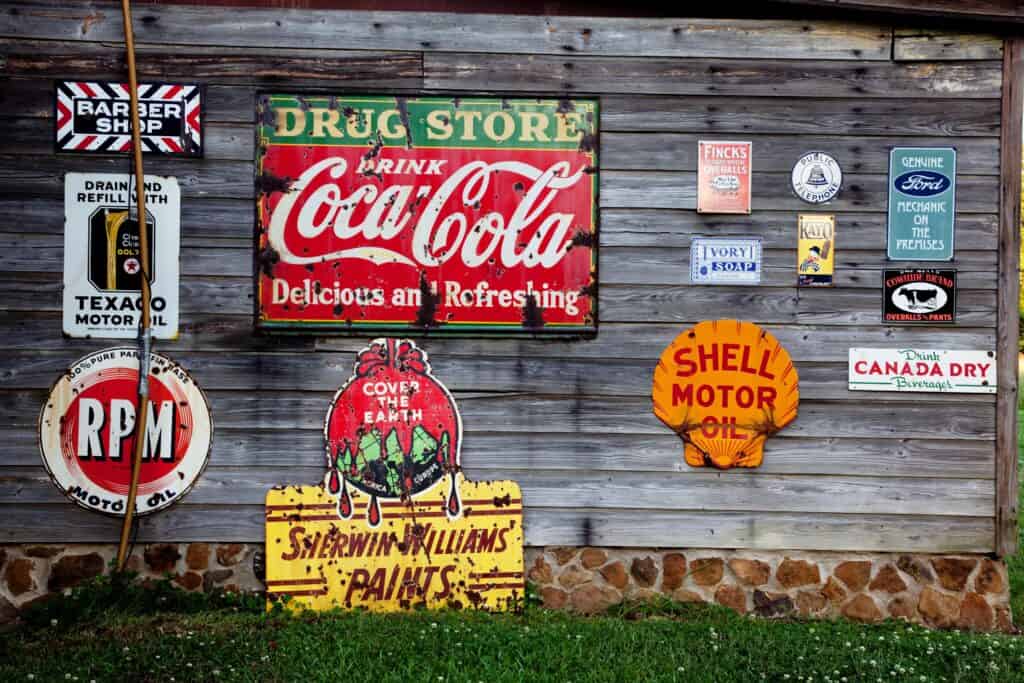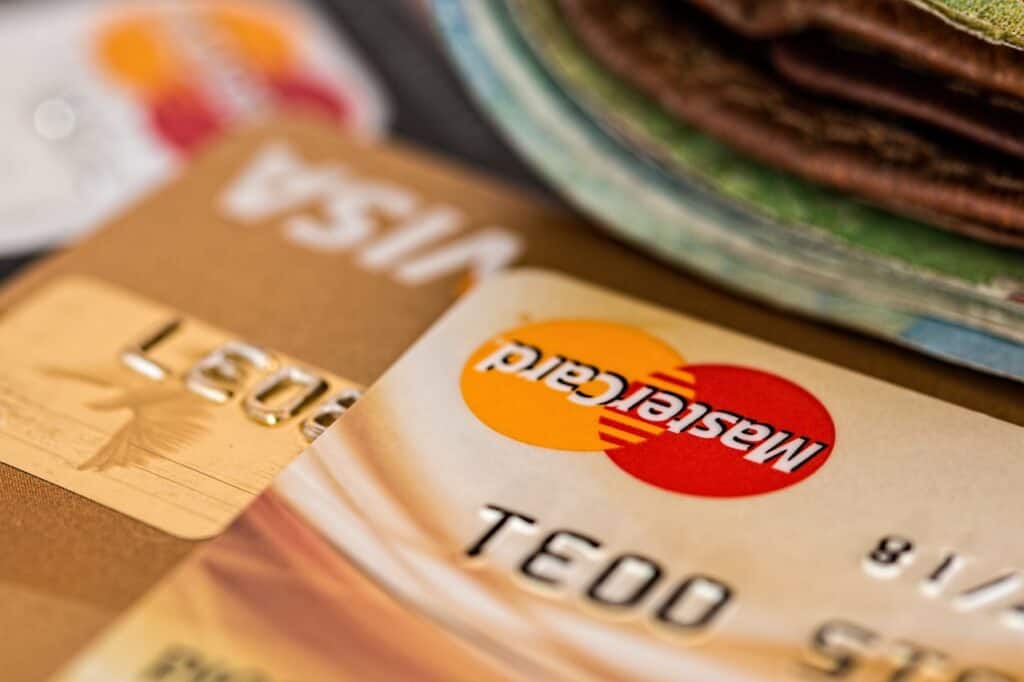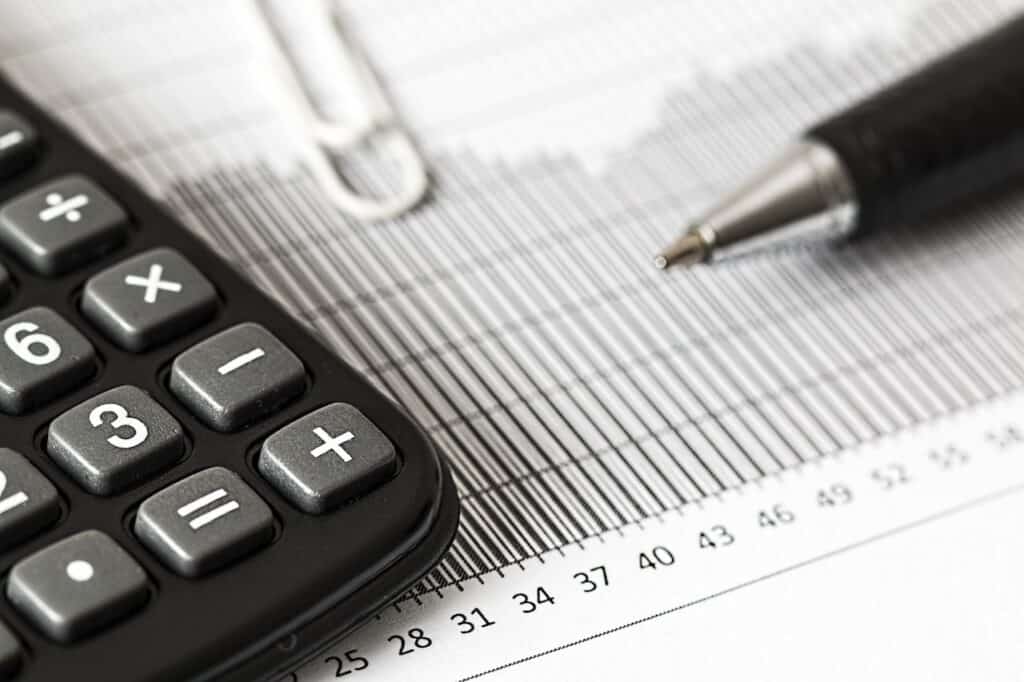
Your company brand is arguably the most important asset in your business.
Amongst other things, a company brand is your DNA, it allows you to make decisions and it is what makes you stand out from your competitors.
Don’t fall into the trap that a company brand is simply a logo, that’s part of it but a brand is so much bigger than a logo.
The following article is not the definitive guide to brand building. It is a guide for small or micro-businesses on 7 simple ways to improve your company brand for little or no money.
A lot of these tips seem very obvious but there are countless businesses currently trading that make these mistakes every single day.
The good news is that the solution to improving your company brand is relatively straightforward.
Read on!

What is a Company Brand?
A company brand or, just, a brand is the process of giving meaning to a company’s products or services.
It is how your customers perceive who you are as a business.
As a founder or owner, you shape your brand by what you do, how you do it, how you treat your staff, how you and your staff look, how you interact with customers, who your customers are, who your suppliers are, your pricing etc. The list goes on.
A lot of brand building is done organically when a business starts and throughout the life of the business.
For example, you may decide that you will only source products from ethical suppliers, you may choose that you wish to operate in the luxury market or you may decide that every member of your staff gets the day off on their birthday.
All of these decisions form what your brand is and how people will see you as a business. It will also help your customers form a decision about whether or not they wish to engage with you and buy your products and services.
So, let’s say you sell eggs and your hens are kept inside all the time and you are targeting customers who want to buy very affordable eggs. By making these ‘brand’ decisions you are consciously targeting buyers who are on a budget and want the best value. You are also excluding customers who only buy free-range or organic eggs and no matter how cheap your eggs are they will never buy from you.
Brand decisions matter because they can affect your bottom line!
You can also work on your company brand when you are more established by running a brand workshop and deciding on a set of brand values.
A good set of brand values become like a barometer and allow you to make decisions about your business based on your values.
For example, if one of your company values is INTEGRITY, then you would never use illegal or underhand methods to gain a competitive advantage.
I will look at brand values in a future post.
Today, however, I am going to look at the simplest of things you can do to improve your company brand, including:
- Fixing your email
- The importance of an up-to-date website
- Your logo or lack of it!
- Social media – keep your wild weekend pics away from your business
- Business bank accounts
- Taking proper photographs
- Scheduling your admin
Your company brand is important – it is who you are, what you do and what people think of you. So let’s start getting it on the right path!
1. Fix Your Email

Nowadays everyone should have an email. I say you should, as I know some tradesmen who don’t have an email address and say they never will.
The type of email address you have is important though.
Business email addresses should portray that you are a professional. You get paid to provide products and services as a professional, so your email should be professional as well.
Don’t use a free, personal email address, please spend a little money. Your business email address should NOT end in any of the following ways:
- @hotmail
- @gmail
- @yahoo
- @outlook
- @aol
It’s inexpensive to purchase a domain name for your business. Domain registrar companies are abundant on the internet, where you can buy a domain (your website name). The following are some of the biggest:
Once you have purchased your domain name you can then link it to a Google account, other providers are available and create your email address.
Follow a naming protocol similar to this:
firstname.lastname@yourcompanyname.com
OR
firstname@yourcompanyname.com
Your email address provides a basic level of credibility for your company brand.
2. Build a Website (and keep it up-to-date)

Now you have purchased your domain name, there’s no excuse not to have a website!
If you already have one, fantastic, you’re ahead of the game. Ask yourself these two questions though:
1. Is it up-to-date and do I keep it constantly updated?
2. Does it need a complete revamp?
If you answered NO, NO & YES, then read on.
We live in the 2020s. The first place people are going to look for you is online. Yes, they may look at social media, but most people are going to look for a website in their journey to learn more about you!
So, what do you do if you don’t have a website or you need to revamp your current site?
BUILD ONE!
It has never been easier to build a website. The internet is full of sites and tools to help you build a site on your own.
The good news is that some of the domain registrar companies listed above can also help you build a website. They include:
Other good website builders you can use, include:
All of these website-building sites offer easy ways to build your new website Including a myriad of predesigned templates, drag-and-drop functionality and a host of other resources. Making the design and launch of your website a straightforward experience.
Don’t worry about your site being an encyclopedic library of pages like the BBC website.
Most sites for small businesses only need a few pages.
A simple home page, contact us, about us, and a page that illustrates examples of the work you do, are all you need to get going.
If you plan to sell products on your site then you’ll need to make sure your site has e-commerce functionality and can accept payments. Most, if not all, of the providers listed above, can help you build a fully functional e-commerce site.
Your new website is a piece of digital real estate and is a huge asset to your company brand.
Just keep it up-to-date!
3. A Logo that Works for You

A lot of people automatically assume that when we talk about a company brand, we are talking about a logo.
A logo is one of many components that makes up brand/branding as a whole.
In the days before fences were used to keep cattle in place, farmers used a ‘brand mark’ to show the ownership of the cattle. The brand marks used were unique, individual designs exclusively used by each farmer. These ‘marks’ were instantly recognisable and made it easy to identify which cattle belonged to which farmer.
Your logo is a direct descendant of these cattle brand marks and should be used as an identifier of your business so that your business is instantly recognised.
When you are first starting you can create your logo, relatively simply by using one of the many logo-making websites or logo generators.
These include:
Logo Design 101
Keep it simple – base your logo on your company name or what product/service you deliver. Use as few elements as possible in the construction of your logo. But, don’t be the same as everyone else. If you are a builder don’t use a hammer or a trowel in your logo. There are thousands of builders’ logos that look like that. A good logo should stand out from its competitors.
Don’t use fancy curly/ornate fonts – think about if you saw your logo from a distance. Can you read the company name? If it is too ornate, it becomes difficult to read and people will just move on.
Create a good colour palate – again, simplicity works best here. Use only two colours at the most, if you need to use three colours, then you can but DO NOT USE MORE THAN THREE in your logo. Use Canva’s Palette Generator to make sure your colours complement each other.
Resize it properly – a logo on a business card is much smaller than a logo on a van. It is the same logo and its format must remain the same, regardless of what medium it is used in. What I mean by this is, if a logo is square shaped it must remain square-shaped when the size is increased. Sometimes logos can be stretched instead of resized and your square logo becomes a rectangle!
An option if you don’t feel confident designing yourself a logo is to use a freelancer network like Fiverr. Where you can find professionals across the world to design your logo at very reasonable rates.
As your business develops and you have a better budget to spend on your corporate identity I would always recommend engaging with a professional designer to help design your identity and help you produce a set of corporate identity guidelines – the rule book for how your logo and associated assets can be used.
A good logo is your identifier and should be a mark of quality. For many, it will be the first introduction to your company brand – make it simple to recognise.
4. Don’t Mix Personal & Professional Social Media

The headline of this section says it all.
To maintain a professional brand your Facebook page mustn’t include a mix of your social, and non-work posts and details of your business, its projects or its clients.
If you are trying to build a business with credibility and professionalism, the last thing your customers need to see is you drunkenly dancing the macarena at your cousin Tony’s wedding or worse!
Just don’t do it.
Also, take a long hard think about posting political rants, posts that are critical of other people or sharing videos or jokes that could be potentially offensive. Even, if you have separate personal and business accounts – the connection can be made
All of these things can hurt your brand and be detrimental to your business.
Although a Tweet or a Facebook post can be deleted, they never really go away. Someone always has the capability of screenshotting your error and reposting it for all to see.
If your business is big enough to have employees, make sure you have a social media policy in your company handbook and that all your employees sign a document to say they have read and understood it.
5. Business Bank Account (make sure you have one)

This may seem like an odd one but it does happen. I have received an invoice in the last 12 months from a tradesman who employs at least two other people. The bank details on the invoice were personal!
This one is important in a couple of really important ways. Particularly for all those micro and small businesses out there.
If you are using a personal account as your main business account – stop it! Just stop!
First of all, if you give your client your personal bank account details and ask them to pay their invoice by bank transfer. Then you make yourself and your business look 100% amateur hours!
This whole exercise is about demonstrating through the power of your company brand that you are a professional and credible business.
Nothing says YOU’RE NOT more than using a personal bank account for your business banking.
It also looks like you are trying to avoid paying some kind of tax. Whether you are or not, it appears that way – which is no good for your credibility.
Mixing personal transactions with business ones is also really messy and trying to unpick each of those could get complicated and end up costing a small fortune in billable hours with your accountant.
Most online banking systems nowadays tell you the type of account you are about to pay into. Save yourself an embarrassing phone call from your client and set up a business bank account.
6. Take Good Photographs (or hire a photographer)

This is way more important than you think it is.
In my experience and I’ve worked in marketing for over 25 years. MDs and CEOs always squirm when you tell them the cost of a photographer.
“Why are we paying that much, surely we can take photographs ourselves on our phones.” They will say!
Yeah, you can, but give it some thought.
Your photographs will be used everywhere from websites, to social, to brochures, case studies etc.
Remember every image, every word and every action connected to your business is an opportunity for your customers and other members of the public to judge who you are and what you do.
It’s now easier than ever to take great pictures on your phone. Our phones do so much of the work for us now when taking pictures but there are still some fundamentals to think about:
- Make sure the camera is in focus/focussing on the main object
- Think about the composition of your photograph, does everything look right
- Pay attention to the background and remove anything that doesn’t belong
- Light is super important. You don’t need expensive lights. Use natural light
- Hold your phone still or buy a tripod
- Look for different angles. Don’t always take the photograph directly in front of you
- Think about candid shots. Don’t just have a person grinning at the camera
- Avoid handshake photographs at all costs!!
For more tips check out this guide on the Hubspot site.
As always if you have the budget use a professional photographer.
Get recommendations for other business associates and do your homework before engaging with a photographer.
Look at their online portfolios and choose a photographer based on the photos they have taken. If you like their work – get in touch with them.
Always have your photographer assign shared copyright to you. You are paying for these images and you should be able to use them wherever you like.
7. Schedule Time to Work on Your Admin

This might be the most important of all the tips.
None of the tasks detailed above can be done on the fly. They each need some level of time commitment.
Whether it is these tasks or other important business focussed tasks – always schedule time in the week when you will work on them.
If you are running a business by yourself or with one or two employees, you must take some time away from your main function in the business to address your administrative tasks.
You choose when works best for you. It could be a couple of afternoons a week, or a Wednesday night or Saturday morning – you choose – but get it done.
Your company brand requires focus. Remember at the start I said that eventually, your brand will become the set of rules you will govern your business by, pay attention to what they are and remain laser focussed at all times.
How Can a Consistent Company Brand Benefit Your Business
Your company brand is much greater than the seven points detailed in this article.
Your brand encompasses everything that is your business.
When you build a brand much of it is done subconsciously before any real thought is given to it, however, it is important that once your brand is formulated that you keep it consistent at all times.
You can do this by asking – who, what, why, where and how questions about your brand.
For example:
What would my brand (company name) do in this situation?
Who are my brand’s (company name) target customers?
How would my brand (company name) sell this product?
This is a simple test to make sure you stay on the right path and undertake your business consistently in line with the principles of your company brand.
In time you can formulate brand guidelines that will offer you and your staff the ultimate playbook to take your business forward.
Company Brand – Wrap Up
In the 25+ years, I have been working with businesses I have found the power of a well-thought-out brand to be one of the most effective tools you can have in your armoury when running a business. A good brand shows you which way is up and defines why you are in business.
Simon Sinek details in his book, Start with Why, that a business that is focused on its purpose or its why, will be more inventive, pioneering and successful.
Defining your brand and its associated values will help you do just that.
Be very protective of your company brand – it’s your greatest asset.







